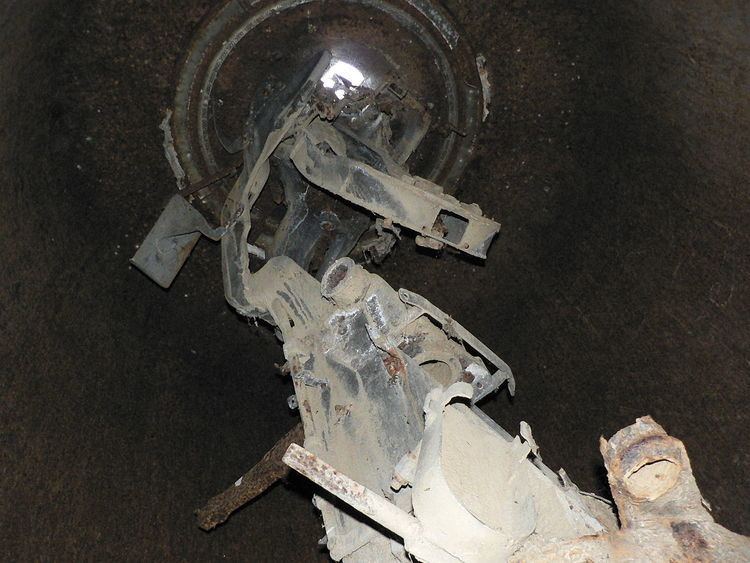Designed 1934 No. built 150 | Place of origin Germany Weight 220 kg | |
 | ||
The M-19 Maschinengranatwerfer is a German 50 mm mortar which was used during World War II. The mortar was developed in 1934 for the purpose of defending permanent military bases. It had a maximum rate of fire of 120 rounds per minute and a range of 750 metres.
Contents
Design
Created by Rheinmetall-Borsig, it is a very heavy and complicated weapon system, with its barrel and base alone weighing 220 kg.
This automatic 5 cm mortar could fire a maximum of 120 grenades a minute, and was electrically operated with manual backup. The firing rate of 120 grenades/minute was seldom used as it caused much stress, wear and tear on the construction. It was loaded with clips of 6 grenades by two crew members. The clips were prepared by several other crew members. One gunner aimed and fired the weapon.
It is unknown how many units were built, but it is estimated that the number could hardly have been much more than 150.
The idea was that the M19 mortar would be used in conjunction with machine guns, especially those mounted in armoured domes. The mortar was to fire into areas that were out of range for the machine guns, such as low spots in the terrain and the far sides of hills. In this way enemy hiding soldiers would be chased out into the open, so that the machine guns could hit them.
R-633 bunker
The R-633 bunker was designed to protect the M19. Less than 100 R-633 were built. Where possible the entire construction was to be buried underground, leaving just the flat armoured opening on the roof to fire through. Access to the bunker was by way of a trench.
The automatic feeder for the mortar required a three-phase electricity supply to power the lift, otherwise ammunition had to be passed up. Earlier versions were manually fed using a flywheel. The bunker held 3,944 mortar rounds. A 24 V battery system provided lighting. Bulbs illuminated to show the rate of fire, 40, 60, 80 or 120 round per minute.
Each R-633 was built to the standard B strength, with 2 m thick walls and roof. If, as was standard, it was to be completely buried, 1,900 m3 had to be excavated. Each bunker required 845 m3 of concrete, 40 tonnes of steel rebar and 6.3 tonnes of other steel items.
Two armoured turrets were designed:
(The 34 and 49 refer to the type of design, the P stands for Panzer or armoured, the 8 is the sum of the last 2 digits of the year (3+5=8))
The R-633 had a crew of 14 men, half working with the mortar, the remainder providing local defence.
